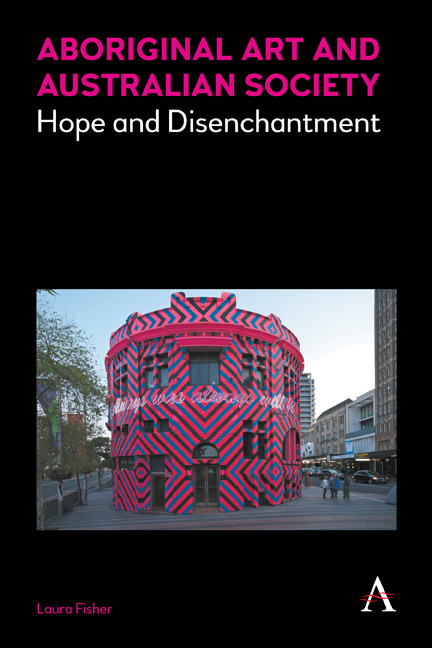Book contents
- Frontmatter
- Dedication
- Contents
- Preface and Acknowledgements
- Introduction
- Part I Governance, Nationhood and Civil Society
- Chapter 1 New Intercultural Relationships in the Post-Assimilation Era
- Chapter 2 Aboriginal People Mobilising Aboriginal Art
- Chapter 3 Understanding Aboriginal Art Subsidy
- Chapter 4 The State Mobilising Aboriginal Art
- Chapter 5 ‘Aboriginal Culture’ at the Nexus of Justice, Recognition and Redemption
- Part II Contemporary Aboriginal Art in the 1980s
- Part III Negotiating Difference
- Part IV Aboriginal Art, Money and the Market
- Conclusion
- Notes
- References
- Index
Chapter 5 - ‘Aboriginal Culture’ at the Nexus of Justice, Recognition and Redemption
from Part I - Governance, Nationhood and Civil Society
Published online by Cambridge University Press: 22 July 2017
- Frontmatter
- Dedication
- Contents
- Preface and Acknowledgements
- Introduction
- Part I Governance, Nationhood and Civil Society
- Chapter 1 New Intercultural Relationships in the Post-Assimilation Era
- Chapter 2 Aboriginal People Mobilising Aboriginal Art
- Chapter 3 Understanding Aboriginal Art Subsidy
- Chapter 4 The State Mobilising Aboriginal Art
- Chapter 5 ‘Aboriginal Culture’ at the Nexus of Justice, Recognition and Redemption
- Part II Contemporary Aboriginal Art in the 1980s
- Part III Negotiating Difference
- Part IV Aboriginal Art, Money and the Market
- Conclusion
- Notes
- References
- Index
Summary
Government practices that are tasked with addressing cultural trauma must address the space where individual psychology imbricates with a socially constituted sense of collective victimisation (Alexander 2003, 100; Nagel 1994; Hall 1990). In order to foster a sense of healing and refreshed dignity among members of a formerly maligned social group, the state must not only address the victimised collective, but the wider society on whom that collective's sense of belonging and recognition depends. The Australian public servants who turned their energies to unravelling the ideology and policies of the assimilation era in the 1960s and early 1970s had to contend with precisely these problems, as did those people who became engaged in the Reconciliation movement. Having been essentially entombed in the public imagination, ‘Aboriginality’ had to be resurrected as a living thing, and the state's bestowal of recognition needed to be made manifest in the public domain. I have made the case that Aboriginal art and other cultural forms have been central to this process, and I wish here to extend this argument a little further and show that in many ways Aboriginal art became metonymic for ‘Aboriginal culture’ in this context.
Cultural Loss, Cultural Rights and Keeping Culture Strong
The events and discourses that have been traced thus far contributed to a postassimilation constitution of Aboriginal culture at the nexus of justice, recognition and redemption. Aboriginal culture became a locus of meaning and intent in national discourse and public culture, due to the state's need for symbols of its bestowal of recognition, the consolidation of a pan-Aboriginal platform in advocacy discourses, and the fact that the growing but often anchorless goodwill of the non-Indigenous Australian public needed to find purchase in something tangible. Across these domains, public discourses on Aboriginal issues have consistently drawn a causative connection between evincing the worth of Aboriginal culture and evincing the worth of Aboriginal personhood.
Before we proceed to illustrations of this, we need to be honest about how difficult it is to pin down the meaning of such a ubiquitous referent as Aboriginal culture.
- Type
- Chapter
- Information
- Aboriginal Art and Australian SocietyHope and Disenchantment, pp. 57 - 70Publisher: Anthem PressPrint publication year: 2016



